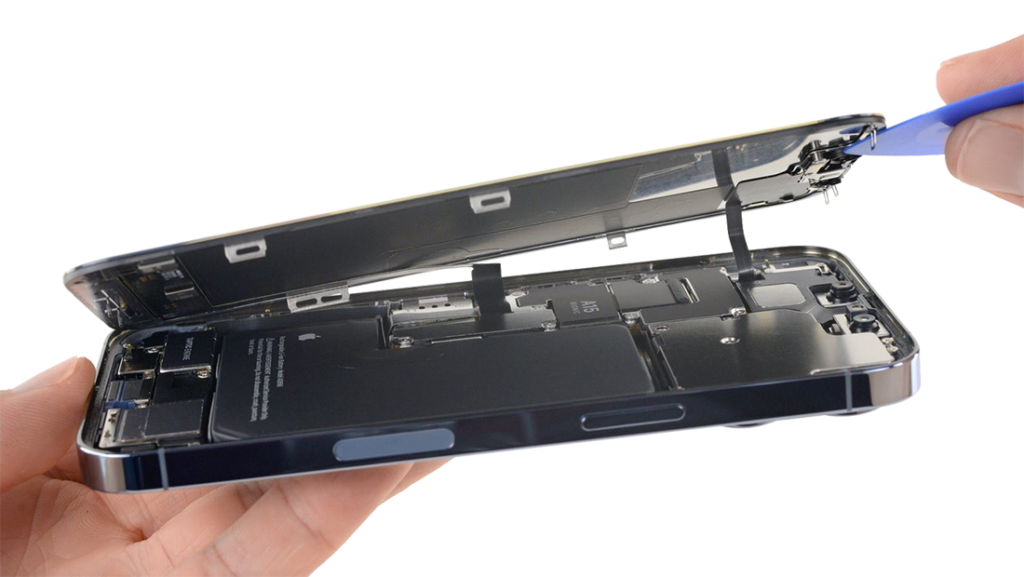Apple has been chipping away at iPhone repair work outside their control for couple of years now. With the updates published to the iPhone 13, they may be gunning to shatter the repair market to a big level or even completely.
Apple’s announcement earlier this week that it would start selling parts and tools directly to consumers and offer repair guides was a huge surprise, and a move immediately hailed as a victory by right-to-repair activists. “One of the most visible opponents to repair access is reversing course,” said Nathan Proctor, a senior Right to Repair campaign director at Public Interest Research Groups (PIRG). “Apple’s move shows that what repair advocates have been asking for was always possible.”
it was just earlier this year, when we discovered that replacing the display on an iPhone 13 would disable Face ID. The new iPhone 13 completely disables the Face ID functionality when you replace the screen with a new one. We have confirmed this repeatedly in our lab, testing with many different phones on iOS 15 and 15.1, and our results have been replicated by numerous repair professionals.

This is a dark day for service providers. One of the most common phone repairs that could once be done with hand tools, this now requires a microscope. This means you won’t be able to fix your iPhone screen yourself without sacrificing major functionality. It also has huge implications for the professional repair industry, for which Apple is the dominant brand to service. Small shops could be shuttered, forced to choose between spending thousands on new equipment or losing a major source of income.
For shops that want to survive, their only options will be to join Apple’s onerous IRP network – not an option for shops that value their customers’ privacy – or work past the iPhone’s locks with micro-soldering tools and training. This unprecedented lockdown is unique to Apple. It’s totally new in the iPhone 13, and hard to understand as a security measure, given that the Face ID illuminator is entirely separate from the screen. It is likely the strongest case yet for right to repair laws. And it’s all because of a chip about the size of a Tic-Tac, tucked into the bottom of a screen.
The most sophisticated repair shops have found a workaround, but it’s not a quick, clever hack – it’s physically moving a soldered chip from the original screen onto the replacement. Screen replacement is incredibly common in iPhones. Tens of thousands of repair shops around support their communities by replacing screens for their customers at competitive prices. And Apple is, with one fell swoop, seemingly cutting the industry off at the knees.
More likely, though, is that this is a strategy, not an oversight. This situation makes AppleCare all but required for newer iPhones, unless you happen to know that your local repair shop is ready for the challenge. Or you simply plan to never drop your phone.
Apple has made some other movies recently that show that potential government scrutiny and oversight could be driving change at the company. In 2020, Apple finally let users set different browser and email apps as default on the iPhone and iPad, and Siri has gotten smarter about learning your preferences for different music apps when you ask it to play tunes.
While it’s likely that Apple is thinking about government pressure, this change might also simply be part of the company listening to its users and correcting some mistakes it made over the last five years or so. Take the new MacBook Pro, perhaps the biggest “mea culpa” Apple has ever offered: The company reversed its trend of pursuing thin and light design at all costs and instead actually made the both the 14- and 16-inch MacBook Pros thicker and heavier than their predecessors. The company also added back ports it had previously removed, killed the unpopular Touch Bar, and generally made a laptop that made it seem like they were listening to consumer feedback. The same could be said for its new home repair program.
Apple’s move this week can also be seen as an extension of a program the company launched last year, when it started providing parts and training to third-party repair shops that met Apple’s qualifications. Obviously, this isn’t the same as making it easy for anyone to do repairs, but opening up access means the repair landscape for Apple products has changed significantly in the last few years.

However big of a change this new plan is, though, Proctor and PIRG see this as a first step, something Apple will need to keep up and expand to really deliver what right-to-repair activists think consumers deserve. “I think Right to Repair knows what it wants, and it will be really hard to convince us to settle for anything less than an open market for repair,” Proctor said. “If they had done this step years ago, maybe we would have to settle, but we have the momentum, and we are going to empower repair as much as we can. I think most legislators agree: This is just one company and a limited program. The floor got raised, but we aren’t near the ceiling yet.”
As for what’s to come, it sounds like Apple is committed to making this just a first step. The company said that repair options would initially focus on commonly-repaired modules in the iPhone 12 and 13, like the screen, battery and cameras, but it says that more options will come in the following year. We don’t know if Apple will ever give right-to-repair activists everything they want. It seems unlikely that Apple will make an iPhone where you can just pop it open and drop a new battery in, like the phones of old. By locking down the most common repair for their devices, Apple has crossed the Rubicon. If we want repair shops to exist in our local communities, we have no choice but to pass right to repair legislation to protect them from this predatory, monopolistic behavior.
In other words, for those who can access Apple’s network, replacing a screen on the iPhone 13 is no different than before. However, for independent service providers, both DIY and repairs shops, everything will be different in the coming days.

